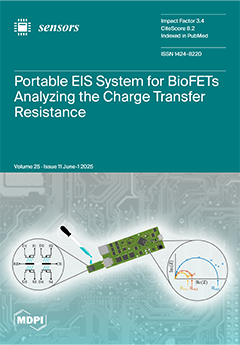The ocean is one of the world’s largest anthropogenic carbon dioxide (CO
2) sinks, but closing the carbon budget is logistically difficult and expensive, and uncertainties in carbon fluxes and reservoirs remain. One specific challenge is that measuring the CO
2 flux
[...] Read more.
The ocean is one of the world’s largest anthropogenic carbon dioxide (CO
2) sinks, but closing the carbon budget is logistically difficult and expensive, and uncertainties in carbon fluxes and reservoirs remain. One specific challenge is that measuring the CO
2 flux at the air–sea interface usually requires costly sensors or analyzers (USD > 30,000), which can limit observational capacity. Our group has developed and validated a low-cost ΔpCO
2 system, able to measure both pCO
2water and pCO
2air, for USD ~1400 to combat this limitation. The device is equipped with Internet of Things (IoT) capabilities and built around a USD ~100 pCO
2 K30 sensor at its core. Our Sensor for the Exchange of Atmospheric CO
2 with Water (SEACOW) may be placed in an observational network with traditional pCO
2 sensors or ∆pCO
2 sensors to extend the spatial coverage and resolution of monitoring systems. After calibration, the SEACOW reports atmospheric pCO
2 measurements that are within 2–3% of the measurements made with a calibrated LI-COR LI-850. We also demonstrate the SEACOW’s ability to capture diel pCO
2 cycling in seagrass, provide recommendations for SEACOW field deployments, and provide additional technical specifications for the SEACOW and for the K30 itself (e.g., air- and water-side 99.3% response time; 5.7 and 29.6 min, respectively).
Full article






